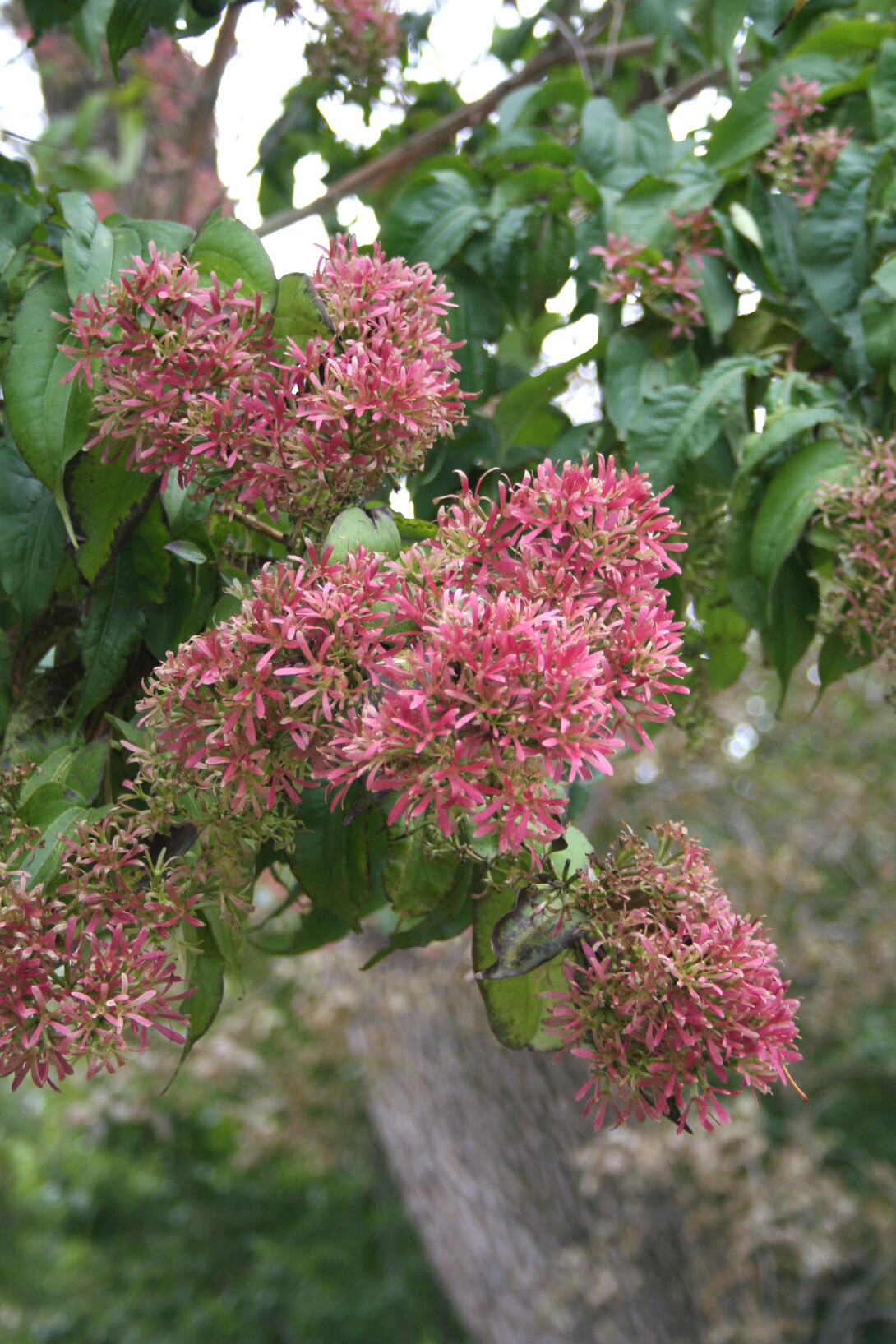
Simply Trees — August 2013
As the heat of summer wears on, the majority of our trees offer the welcome relief of shade, but that's about it. Most of our “ornamental” flowering trees have long since dropped their petals and produced seed and fruit. A more or less uniform expanse of green foliage greets our eyes as we look over our urban trees.
But there are a few species that buck the trend and wait to flower until well after spring has given way to summer. Few can be considered natives to the region but, nonetheless, these trees are vastly underplanted and deserve a larger role in our landscapes.
Perhaps the most common summer-bloomer is the goldenrain tree (Koelreuteria paniculata), with abundant yellow flowers throughout the canopy from late June until mid-July. This mid-sized tree is well-suited for an urban environment since it is quite tolerant of heat, pollution, drought and wind. A beautiful specimen exists in Omaha's Elmwood Park, just south of the University of Nebraska Omaha campus. In Lincoln, several can be found in the neighborhoods just south of UNL's East Campus.
Amur maackia, another medium-sized tree, bears upright racemes of cream-colored flowers in July. These flowers are pleasantly-scented and very attractive to bees. Maackia amurensis shows promise as a tough street tree. Several specimens can be found along the Holdrege Street sidewalk on the south edge of Maxwell Arboretum.
Another great pollinator tree that supports native bees is the Japanese pagoda tree, Sophora japonica. While the small, cream-colored flowers of this interesting tree aren't particularly showy, they are fragrant throughout July and August and they give way to unique seeds that strongly resemble long pea pods (look for one at the corner of Biochemistry Hall on UNL’s East Campus).
Sourwood is a native of the Appalachian Mountains, and is perhaps best known for its intense fall color. It is rarely planted in southeast Nebraska, but is hardy to zone 5 and should do well there. The flowers of Oxydendron arborea appear in July as masses of delicate, tiny, downward-facing bells strung along the tips of thin branches all over the tree. It tends to be a slow grower, but it's worth the wait.
Buttonbush is a native shrub that can be pruned into an attractive, multi-stemmed small tree. Cephalanthus occidentalis bears striking, ball-shaped flowers that resemble a Fourth of July firework exploding in a dense burst of white. Fittingly, this species can reach the peak of flowering around early July, but has a long bloom period that can last from late spring through late summer. It can be seen in its native shrub form along the shorelines of many rainwater basin lakes in Lancaster County.
Seven-son flower tree (Heptacodium miconioides) shares a similar form with buttonbush, but is slightly larger. This tree waits until September to bloom, but then really performs—with clusters of white flowers giving way to brilliant red and pink floral bracts that last for weeks. It's worth planting for its attractive, exfoliating bark alone, but the flowers really put it over the top. It is usually one of the last trees to bloom before frost, with the exception of the witchhazels that often bloom in November.
When the heat of summer melts away all memories of the flowers of spring, some of these later-blooming trees hold our interest as we wait for the cooler days and bright foliage of fall.
Ryan ArmbrustNebraska Forest Service
402-472-2971
rarmbrust2@unl.edu Dan Moser
IANR News Service
402-472-3030
dmoser3@unl.edu







